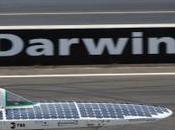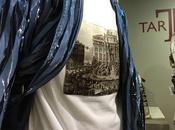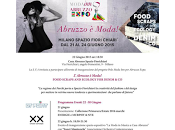
Christopher Boffoli è un fotografo, scrittore, artista e regista che vive e lavora a Seattle. Principalmente autodidatta, si è dato alla fotografia come hobby durante l’adolescenza, affinando le sue abilità come studente giornalista al liceo e all’università. Ha viaggiato in tutto il mondo, scrivendo e fotografando i suoi viaggi con fotografie e video documentari. A Seattle lavora come scrittore e fotogiornalista, realizzando servizi speciali e lavorando a notizie dell’ultim’ora. Il suo lavoro è stato pubblicato, online e su carta, in oltre 90 paesi.
Big Appetites è un’incredibile serie iniziata nel 2003 e dedicata al cibo, ma non solo.
Persone minuscole in un mondo di dimensioni normali: i viaggi di Gulliver sono una delle tue ispirazioni culturali che arrivano dall’adolescenza?
No, i viaggi di Gulliver di Swift sono certamente un ottimo esempio di un lavoro precursore che sfrutta il contrasto tra dimensioni e lo cito frequentemente come prova del fatto che l’idea di mischiare scale diverse arriva da molto lontano nel tempo. Il fascino che l’uomo prova verso le miniature è sorprendentemente costante nelle culture. Basta pensare che i musei sono pieni di reperti antichi di migliaia di anni che sono essenzialmente idoli e rappresentazioni del mondo reale in miniatura.
Il mio lavoro è stato influenzato maggiormente da molta televisione e dal cinema che ho visto da ragazzino nei tardi anni ’70 e nei primi ’80 che utilizzavano tra l’altro la contrapposizione tra scale differenti: Dr. Shrinker (1976), The Incredible Shrinking Woman (1981), Honey I Shrunk the Kids (ovvero “Tesoro, mi si sono ristretti i ragazzi”, 1986). Ero inoltre un costruttore e collezionista appassionato di macchinine Matchbox dettagliatissime.
L’idea di “mischiare” le persone e il mondo attorno a loro usando scale differenti è stata onnipresente durante tutta la mia infanzia.
Dici che il cibo e i giocattoli sono tra i più comuni elementi di ogni cultura e rendono il tuo lavoro accessibile praticamente a chiunque. L’umorismo e la sorpresa sono le prime reazioni a questa combinazione bizzarra, vorresti anche far nascere una riflessione?
Sì, gli elementi del gioco e del cibo sono stati scelti per la loro accessibilità interculturale. Ma io sono un artista americano e il lavoro così com’è arriva da una prospettiva anch’essa americana. La sorpresa e l’ironia sono le note più alte di questo lavoro, studiate per coinvolgere l’osservatore. Ma ci sono temi più profondi che spesso vengono persi. Sono correlati alla relazione disfunzionale che l’America ha col cibo: consumo eccessivo, porzioni esageratamente grandi, produzione industrializzata, spettacolarizzazione degli alimenti, ecc.
Aggiungi delle didascalie originali alle tue foto che sembrano dare forza al mondo surreale che rappresenti. Sono dei suggerimenti per interpretare la scena?
Le didascalie sonoproprio studiate per rinforzare il contesto e l’umorismo del lavoro. Ma al di là dei temi che ho suggerito qui sopra, sto sempre attento a non spiegare troppo di queste immagini. Credo sia importante lasciare il giusto spazio all’osservatore di modo che trovi la sua interpretazione e forse possa dare un suo significato al’opera.
Il mondo che rappresento all’interno di queste immagini supporta l’idea che dovremmo sempre lottare per guardare il mondo sempre più da vicino. Così le didascalie aiutano a cionvolgere e a trattenere l’osservatore più a lungo. Si guarda l’immagine all’inizio e si sorride, poi ci si ferma ancora un po’ mentre si assorbe la didascalia e poi si sorride di nuovo. Funzionano insieme.
Potresti spiegare il titolo della serie? Suona come una provocazione, è esatto?
Il lavoro si chiamava “Disparity” all’inizio, per sottolineare per l’appunto la differenza tra le figure umane e gli sfondi di cibo. Ma più recentemente è stato rinominato “Big Appetites”, che gioca maggiormente sul tema centrale di questi alimenti eccessivamente grandi. La serie sarà lanciata a livello mondiale come libro verso la fine dell’anno (da Workman Publishing NY) e credo che il nome “Big Appetites” sarà anche il nome della raccolta.
Grazie Christopher!
Interview with Christopher Boffoli
Christopher Boffoli is a Seattle-based photographer, writer, artist and filmmaker. Largely self-taught, he took up photography as a hobby in his teens, honing his skills as a student journalist in high school and college.
He has traveled the world, writing and photographing his travels through documentary photography and video. At home in Seattle, he works as a writer and photojournalist, producing both feature stories and covering breaking news.
His work has been published – online and in print – in more than 90 countries.
Big Appetites is an amazing series started in 2003 and dedicated to food, but not only.
Tiny people in a normal-sized world: are the Gulliver’s Travels one of your cultural inspiration from childhood?
No. Swift’s Gulliver’s Travels certainly is a very good example of an early work that exploits size juxtaposition. I cite it frequently as evidence that the idea of mixing scales goes back very far. Human being’s fascination with miniatures is surprisingly constant in human cultures.
Just consider that museums are full of ancient artifacts going back tens of thousands of years that are essentially miniature idols and representations of the real world.
My work was more influenced by a lot of the television in cinema I saw growing up in the late 1970′s and early 1980′s which also used the concept of scale juxtaposition (Dr. Shrinker (1976), The Incredible Shrinking Woman (1981), Honey I Shrunk the Kids (1986).
I was also an avid model builder and a collector of perfectly detailed Matchbox cars. The idea of mixing scale between people and the world around them was ubiquitous during my childhood.
You say that food and toys are among the most common elements in every culture in the world and make your works accessible to almost everybody. Humor and surprise are the first reactions to this weird combination, would you also like to arouse reflection?
Yes, the elements of toys and food were chosen for their accessibility cross-culturally. But I am an American artist and as such the work comes from an American perspective. Surprise and humor are the top notes in this work, designed to engage the viewer. But there are deeper themes in the work that are often missed. They are related to America’s often dysfunctional relationship with food: over-consumption, excessive portion sizes, industrialized food production, food spectatorship, etc.
You put original captions on your pictures which seem to give strength to the surreal world you represent. Are they suggestions to explain these scenes?
The captions are really designed to reinforce the context and humor in the work. But other than the themes I have suggested above, I also want to take care never to explain too much about the images. I think it is important to allow space for the viewer to find their own way into the work and perhaps even impart their own meaning.
The world that I present within the frame of my photographs supports the notion that we should always strive to look more closely at the world. So the captions also help to engage and hold the viewer longer. They look at the image first and laugh and then are held there longer when they ingest he caption and then laugh again. It works together.
Could you explain the title of the series? It sounds provocative, doesn’t it?
The work has been called ‘Disparity’ in the past, due to the disparity between the figures and the food backgrounds. But more recently it has been called ‘Big Appetites’ which plays more on the central theme of excessively large foods. The work will be released worldwide as a book later this year (by Workman Publishing NY) and I think Big Appetites will be the title of the book as well.
Thank you Christopher!











